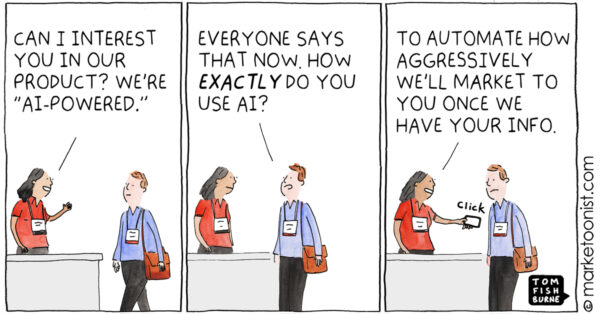AI washing is a term used to describe the practice of companies or organizations overstating, exaggerating, or falsely claiming that their products, services, or operations use artificial intelligence (AI) when they do not—or when the use of AI is minimal and does not justify the claim. It’s analogous to “greenwashing,” where companies exaggerate their environmental friendliness.
How AI Washing Happens
- Marketing Hype:
- Companies may label software or tools as “AI-powered” for the sake of attracting investment, media attention, or customers.
- For example, a simple algorithm or rules-based system might be marketed as “AI,” even though it doesn’t involve machine learning or other advanced AI techniques.
- Minimal AI Involvement:
- A product might use AI for only a small part of its functionality but present it as the core feature. For instance, an app might use a basic chatbot but claim it employs advanced natural language processing.
- Misleading Terminology:
- Buzzwords like “deep learning,” “neural networks,” or “generative AI” might be used inappropriately to describe systems that don’t actually utilize those technologies.
- Corporate Strategy:
- Companies may reposition themselves as “AI-driven” to attract funding or appear innovative, even when AI is not central to their operations.
Why AI Washing is Problematic
- Erodes Trust: Customers and investors may become skeptical about AI claims, making it harder for genuinely innovative companies to gain credibility.
- Misleads Consumers: Overstating capabilities can lead to disappointment or misuse of products.
- Hinders Progress: Resources may be diverted to companies or projects that rely on hype rather than genuine innovation.
- Regulatory Concerns: False claims about AI capabilities could lead to scrutiny or legal challenges, especially in regulated industries like healthcare or finance.
Examples of AI Washing
- A thermostat marketed as “AI-driven” that simply uses pre-programmed schedules rather than true machine learning.
- A CRM tool claiming to offer “AI-based insights” but actually just providing basic analytics.
- A company branding itself as an “AI startup” without any substantial AI R&D or products.
How to Identify AI Washing
- Ask for Specifics: Look for details on how AI is used. Are there descriptions of the underlying technology (e.g., machine learning models, data sources)?
- Evaluate Outcomes: Does the product or service deliver results consistent with AI capabilities, or does it rely on manual inputs and rules?
- Check Transparency: Legitimate AI companies often provide white papers, case studies, or technical documentation to substantiate their claims.
- Beware of Buzzwords: Be cautious of heavy use of jargon without concrete demonstrations.
In Summary
By being informed and critical, consumers and investors can help combat AI washing and promote accountability in the tech industry.


Recent Comments